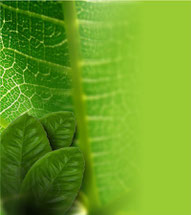Theme III.a: Micromorphological characteristics of plant drugs (vegetal drugs, herbal drugs)

Cells
What is a cell?
The cell is the smallest element, main and essential for any living organism. It can consist of a single cell (bacteria, protozoa) or be multicellular as animals and plants which are made of millions of cells.
Animal cells are protected by only the plasma membrane; plant cells possess, moreover, a rigid cell wall, caused by secretion.
Cells usually live together with each other (multicellular organisms) and form the organic tissues.
Cell theory
The cell theory may be summarized as follows:
1. All living organisms are composed of cells and cell products.
2. Only new cells are formed from preexisting cells.
3. The genetic information needed during the life of cells and which is required for production of new cells is transmitted from one generation to the next.
4. Chemical reactions in an organism, (metabolism), take place in the cells.
Cell differentiation
There are different types of cells regarding their sizes and shapes. Some of the smallest bacterial cells are cylindrical shape of less than one micron or
microns (1 micron equals one-millionth of a meter) length.
On the other hand there are the nerve cells, corpuscles of complex shape with numerous thin extensions that can reach several meters length.
Plant cells
Plant cells are usually more than 100 microns in length (may reach 2-5 cm in green algae) and have a polygonal shape, as they are enclosed in a rigid cell wall.
Animal cells
The animal tissue cells are usually compact, between 10 and 20 microns in diameter and a deformable surface membrane and almost always is very
folded.
Despite the many features of appearance and function that make cellular differentiation, all cells are wrapped in a membrane called plasma, which encloses a water-rich substance called cytoplasm.
Inside cells are numerous chemical reactions taking place that allow them to grow, produce energy and eliminate waste. All these reactions are called metabolism (the term comes from a Greek word meaning change).
Both animal cells and plant cells contain hereditary information encoded in deoxyribonucleic acid (DNA) molecules; this information leads the cell activity and ensures reproduction and the
inherit of character to offspring.
These and many other similarities (including many identical or nearly identical molecules) show that there is an evolutionary relationship between the current cells and first appeared on
Earth.

 Pharmacognosy´s topics - Medicinal plants
Pharmacognosy´s topics - Medicinal plants


Write a comment